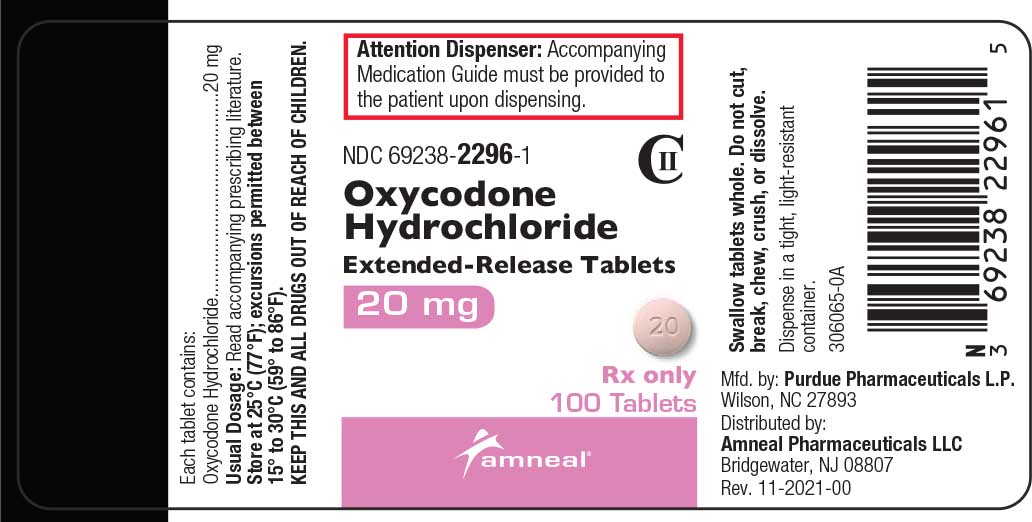Comprehending the Different Types of Oxycodone Formulations Available out there
In the world of discomfort administration, oxycodone stands as a powerful analgesic with different formulations tailored to certain needs. Recognizing the nuances between immediate-release, extended-release, controlled-release, mix, and abuse-deterrent formulations is critical for healthcare providers and individuals alike. Each variant offers an one-of-a-kind set of factors to consider and benefits, influencing therapy effectiveness and safety profiles. By diving into the unique characteristics of these oxycodone solutions, a clearer photo arises regarding their viability for various medical circumstances.
Immediate-Release Oxycodone
Immediate-release oxycodone is an extensively recommended opioid medication usually made use of to manage sharp pain. It belongs to a course of medicines known as opioid analgesics, which work by binding to opioid receptors in the brain and spine, reducing the perception of pain. This formula of oxycodone is created to provide fast pain alleviation, usually within 15 to thirty minutes of intake, with peak results taking place within 1 to 2 hours.
Health care suppliers might suggest immediate-release oxycodone for problems such as post-operative discomfort, injuries, or various other short-term unpleasant conditions. It is essential for clients to follow their health care service provider's instructions very carefully when taking immediate-release oxycodone to lessen the risk of negative effects and issues.

Extended-Release Oxycodone
Provided the requirement for longer-lasting discomfort monitoring services in certain situations, Extended-Release Oxycodone supplies a sustained-release solution of the medicine for extensive relief. This solution is developed to slowly release oxycodone right into the bloodstream over an extended duration, typically supplying alleviation for up to 12 hours per dose. Extended-Release Oxycodone is commonly recommended for people needing 24/7 pain administration that can not achieve sufficient relief with immediate-release solutions alone.
One of the vital benefits of Extended-Release Oxycodone is its capability to maintain steady medicine levels in the body, minimizing the regularity of application compared to immediate-release formulations. This extensive dosing interval can bring about enhanced ease for individuals and potentially far better discomfort control by reducing variations in medication concentrations.
It is critical to keep in mind that Extended-Release Oxycodone lugs a high danger of misuse, misuse, and addiction, stressing the importance of strict adherence to the suggested dosing routines and close surveillance by doctor. Patients must just utilize this formula under the assistance of a healthcare expert to minimize the danger of adverse impacts.
Controlled-Release Oxycodone
How does Controlled-Release Oxycodone differ from Extended-Release solutions hurting monitoring strategies?

Contrasted to Extended-Release formulas, Controlled-Release Oxycodone may supply an extra specific and foreseeable launch of the medication. This can be advantageous for patients calling for constant pain monitoring without the fluctuations that might accompany other solutions. Furthermore, Controlled-Release Oxycodone might be favored in situations where an extra steady and controlled launch of the medication is desired to take care of chronic discomfort conditions properly.
Oxycodone Combination Solutions
Oxycodone Combination Solutions integrate oxycodone with various other energetic ingredients to improve discomfort management effectiveness. By incorporating oxycodone with substances such as acetaminophen or aspirin, these solutions aim to supply a collaborating effect in relieving pain (Buy Oxycodone online). Acetaminophen, for example, can enhance oxycodone's analgesic residential properties by targeting various pain pathways, potentially leading to boosted discomfort relief
One typical oxycodone combination formula is Percocet, which mixes oxycodone with acetaminophen. This mix is often prescribed for modest to extreme discomfort management. Another well-known formulation is Endocet, which likewise integrates oxycodone with acetaminophen, using comparable benefits suffering control.
The addition of other active ingredients in oxycodone combination formulations can also help in reducing the general opioid dosage needed for efficient discomfort relief, possibly lessening the threat of negative effects linked with greater opioid dosages. Nevertheless, it why not try this out is critical for health care providers to thoroughly evaluate each client's needs and medical background prior to prescribing oxycodone mix formulas to make sure effective and secure discomfort administration.
Abuse-Deterrent Oxycodone
Abuse-deterrent solutions of oxycodone have actually been established to help minimize the dangers associated with opioid abuse and abuse. These formulas are designed to make it extra tough to tamper with the drug for the function of misuse. They integrate specific modern technologies that prevent common approaches of abuse, such as squashing the pills for grunting or injecting. By making it tougher to change the medication's original kind, abuse-deterrent oxycodone aims to minimize the possibility of abuse and addiction.
One common method made use of in abuse-deterrent formulations is the addition of physical obstacles that prevent the pills from being crushed or liquified quickly. Some solutions also include materials that generate an unpleasant impact if the medicine is meddled with, better discouraging misuse. While these solutions are not foolproof and can not completely get have a peek here rid of the danger of abuse, they stand for an advance in addressing the opioid epidemic by making it much more tough for people to abuse oxycodone.
Verdict
In conclusion, it is essential for medical care professionals to understand the different kinds of oxycodone formulations offered in the marketplace. Immediate-release, extended-release, controlled-release, mix solutions, and abuse-deterrent oxycodone each have their own distinct attributes and indicators. By being experienced regarding these formulas, health care providers can make informed decisions when recommending oxycodone to individuals, considering elements such as pain management requires, possible for misuse, and specific person threat variables.
Extended-Release Oxycodone is usually suggested for individuals requiring ongoing pain administration who can not achieve ample alleviation with immediate-release formulas alone. - Buy Oxycodone online
